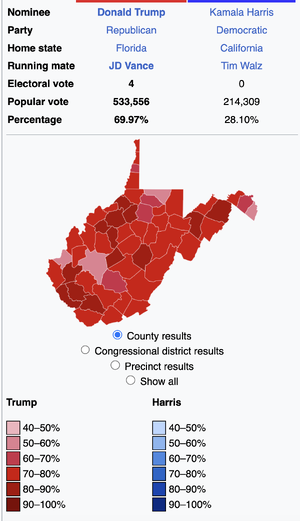In one of the country’s poorest areas, the quantity and quality of government deliveries have dropped, forcing one charity to make do with thin soup and dried cranberries.

www.nytimes.com
Sara Busse needed to make a hot meal for 40 needy seniors. She had promised a main dish, a starch, a vegetable, a fruit and a dessert.
In the past, she had gotten many of those ingredients for free from the U.S. Department of Agriculture.
This time, she had dried cranberries, crackers and vegetable soup.
“What am I supposed to do?” she said. “What am I supposed to cook?”
Earlier this year, the Trump administration
cut about $1 billion in federal aid to anti-hunger groups, according to the national advocacy group Feeding America.
That put more pressure on charitable organizations that distribute groceries or meals to hold up their corner of the American safety net, dipping into reserves and scrounging for donations to replace the food they had lost.
Ms. Busse’s charity in the shadow of West Virginia’s Capitol illustrates this struggle in miniature. Trinity’s Table serves meals at a senior gathering, a child-care center and a women’s shelter, all to people living in or near poverty. For many of her clients, Ms. Busse said, this may be the heartiest meal of the week — and perhaps the only one of the day.
In the past few months, Ms. Busse had already spent $10,000 — a third of her group’s savings — to keep the meals going, replacing the ingredients the government was no longer providing.
She said she had begun to feel as if she were trapped in some grim reality cooking show, forced to turn a dwindling supply of federal aid into 600 meals a week, for as long she could.
...
The Agriculture Department began helping food banks this way in the 1980s, with a program that served a dual purpose: It provided nutritional items to needy individuals but also propped up prices for U.S. farmers, by buying their goods and then giving them away.
During his first term, President Trump did not cut this aid; he
increased it, sharply, to accommodate farm surpluses caused by his trade wars and the hunger that followed the Covid-19 pandemic. Spending on food aid quadrupled, to $3 billion in 2020.
This time, however, Mr. Trump’s administration did the opposite. It canceled about $1 billion in food aid announced last fall by President Joseph R. Biden Jr., according to Feeding America. Feeding America said that, before those cuts, it had projected that the government would spend $2 billion on aid to food banks this fiscal year.
...
The sudden cutbacks hit hard in Appalachia, where hunger is especially prevalent and government aid plays an outsize role in fighting it.
Food banks in cities typically get 25 percent or less of their food from the Agriculture Department. They have other options: donations from big-box stores and grocery distribution centers, wealthy benefactors and companies.
Not here.
Facing Hunger Foodbank, which supplies groceries to food pantries and charity kitchens in the southern half of West Virginia, relied on the government for about 40 percent of its food.
It had been expecting 16 truckloads from the government for April. Then 11 of those were canceled, said Cyndi Kirkhart, the food bank’s chief executive.







